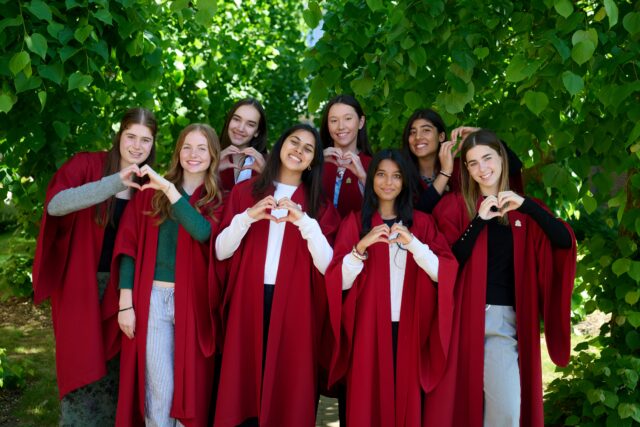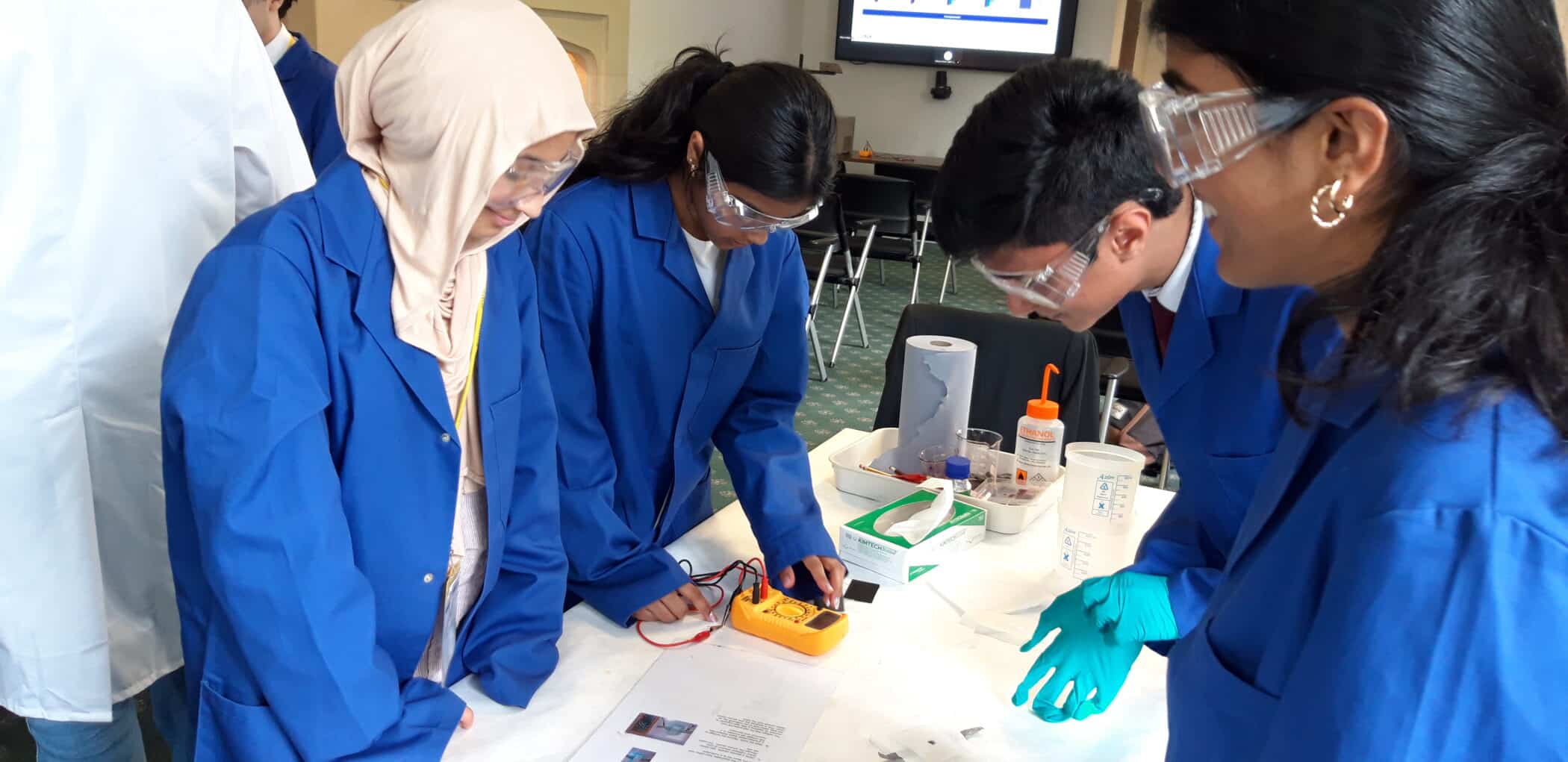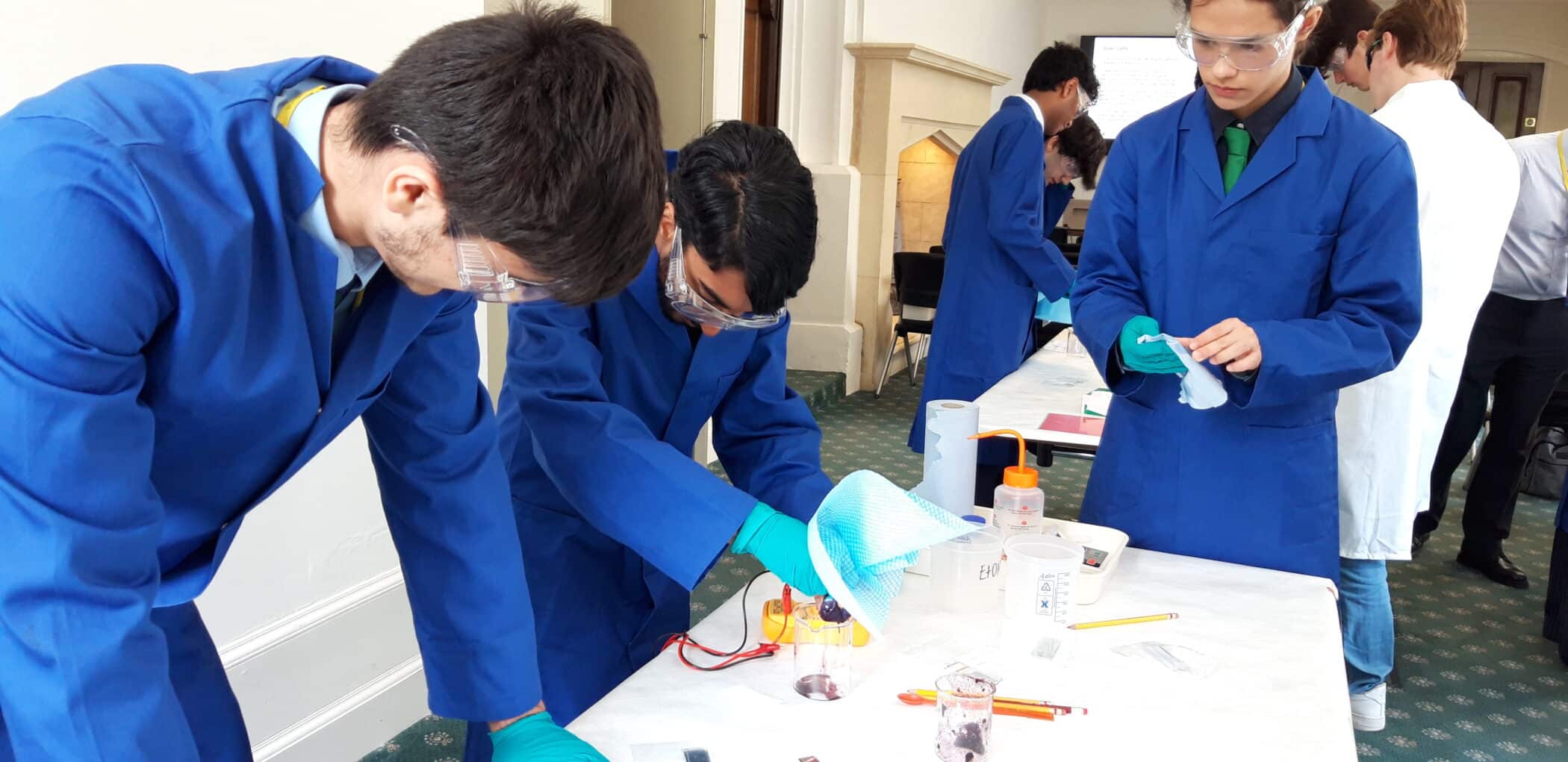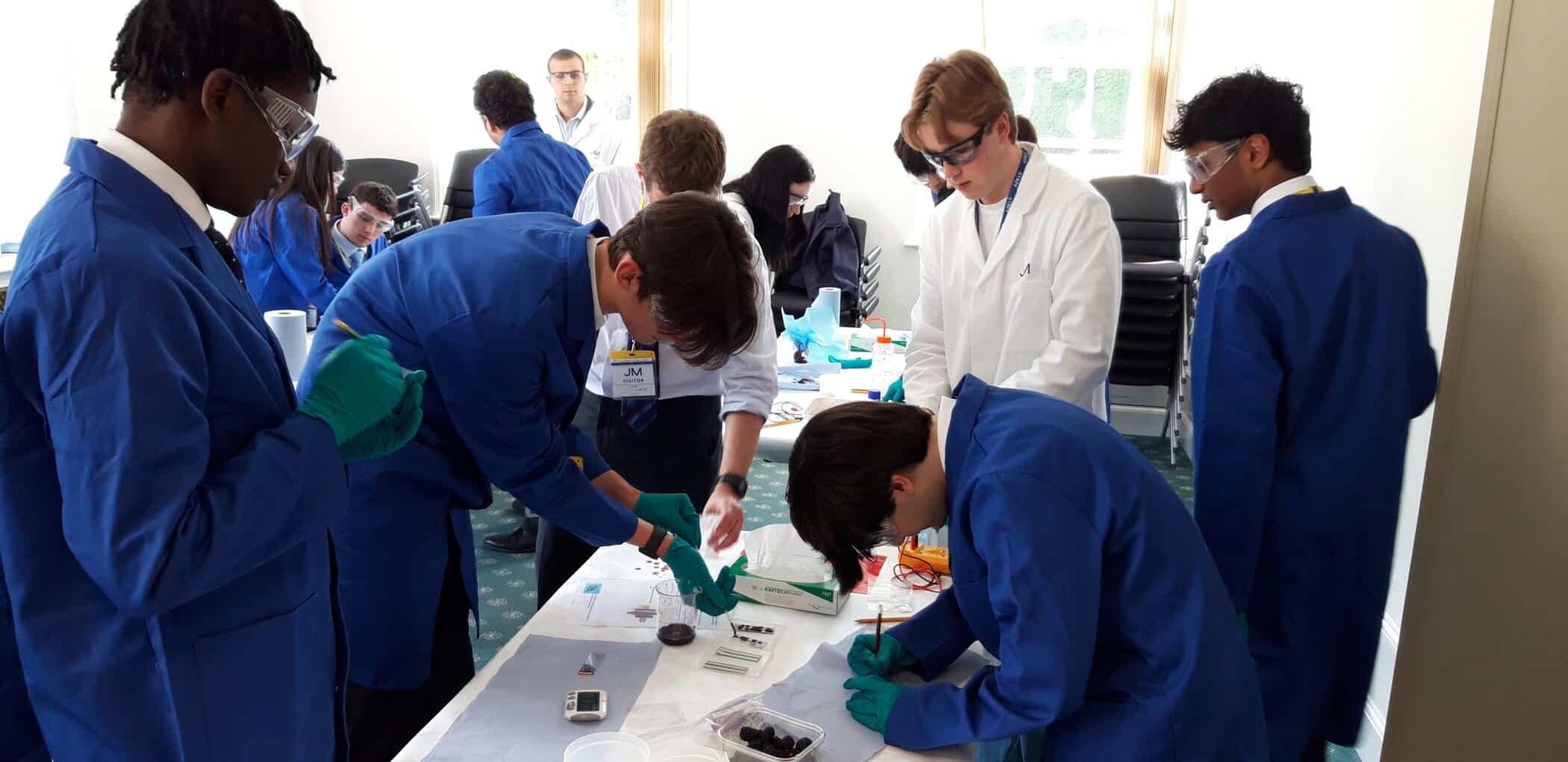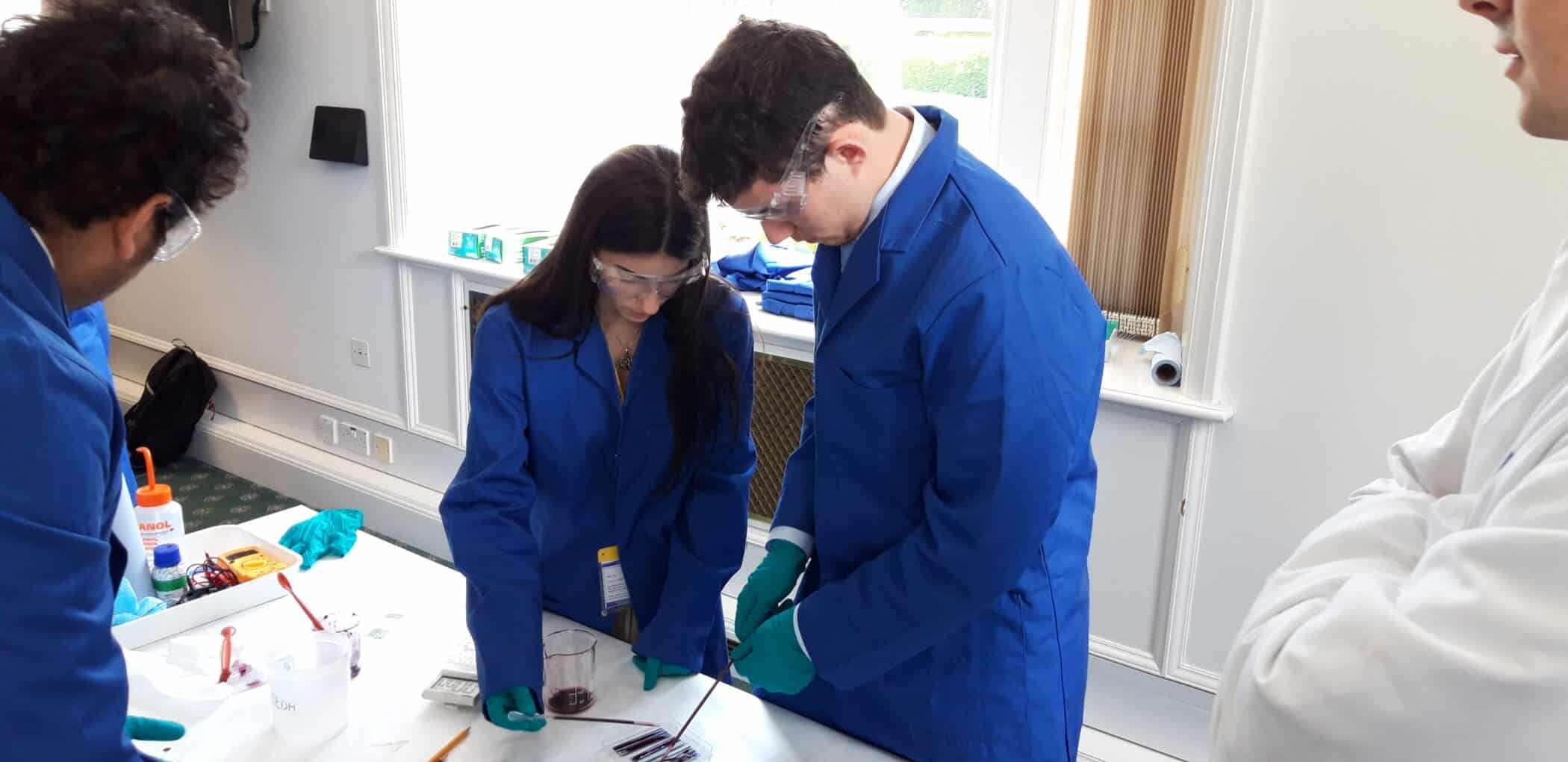Students had an incredible opportunity to visit the cutting-edge Johnson Matthey Technology Centre, a facility where new technologies are developed and tested, primarily focusing on sustainable solutions and innovation in fields like catalysis, energy, and life sciences.
This experience took them on a tour of active research labs, where they got a first hand look at the innovative work happening in STEM fields. Students got the chance to dive into the world of scientific discovery and explore the endless possibilities of STEM careers in a dynamic, real-world commercial environment.
On Monday 12 May, 14 Year 12 students visited the Johnson Matthey Technology Centre in Reading to explore their laboratories and see the innovative research taking place in the fields of sustainable energy and pollution reduction.
We began by touring their laboratories, where we could observe the cutting-edge equipment they have that allow them to manufacture and analyse different substances. A highlight of the tour was seeing where they test catalytic converters, used to clean exhaust fumes from combustion engines. They have canisters of a variety of common exhaust gases that they can release in different quantities, simulating the emissions from a vehicle. These gases are then passed through the catalyst they are testing, allowing them to test and analyse how efficiently the air is cleaned as it passes through.
During the tour, we had short discussions about the three main areas of research in Johnson Matthey: clean air, catalysts and electrochemistry. We learnt about how they design and develop catalysts on a lab scale, how catalytic converters work, and how fuel cells can be used to generate electricity. One of the very interesting projects they are working on is how hydrogen fuel cells can be used to generate electricity to power cars, so fewer precious metals are required to manufacture electric cars.
As well as the site tour, we completed two practical experiments to further understand the research undertaken at the Technology Centre. The staff had prepared standard equipment commonly used in experiments, with brief guides on how to carry the experiments out.
Our first task was to create a solar cell using the purple anthocyanin pigments found in blackberries. Out of four teams, those who had the highest average potential difference measured from their solar cells would win a prize, encouraging us to give it our all. We used apparatus such as conducting glass, nylon fabric and an electrolyte solution to construct them, working together to help those in our team achieve the best results possible.
Our next experiment involved creating our own fuel cells to measure the voltage produced over time. After a briefing, we split into teams once again to build miniature versions of the life-sized fuel cells being constructed in the laboratory. While the process was challenging as not all the equipment was cooperative, we were able to learn that, in the research sector, most experiments would give us similarly unreliable results due to the uniquely innovative sectors that the researchers work in.
The day finished by a presentation about careers in science, and the different pathways available to researchers at Johnson Matthey. This gave us valuable insight into the different directs a STEM career can take.
The trip was incredibly interesting, and we were fascinated by the research techniques and processes employed throughout the different departments within the facility to complete novel research. This experience has given us an appreciation for the dedication and complex processes that go into creating a sustainable world and has inspired many of us to pursue a career in STEM.
Trips like these can spark curiosity in students, allow them to apply their practical knowledge to real-world contexts, encourage problem solving, critical thinking and ignite important conversations regarding potential careers. At Habs, our learning goes
Related posts
See all posts